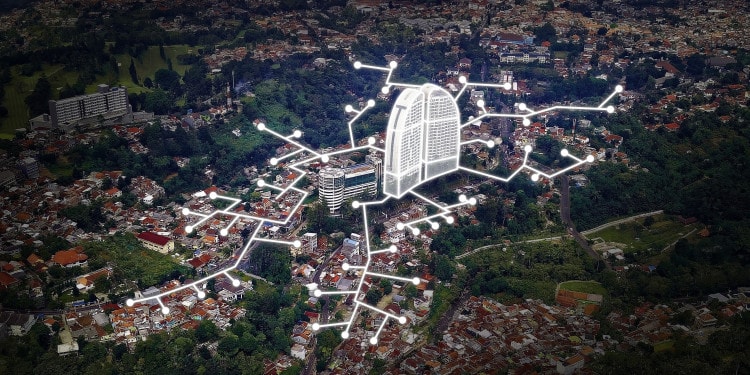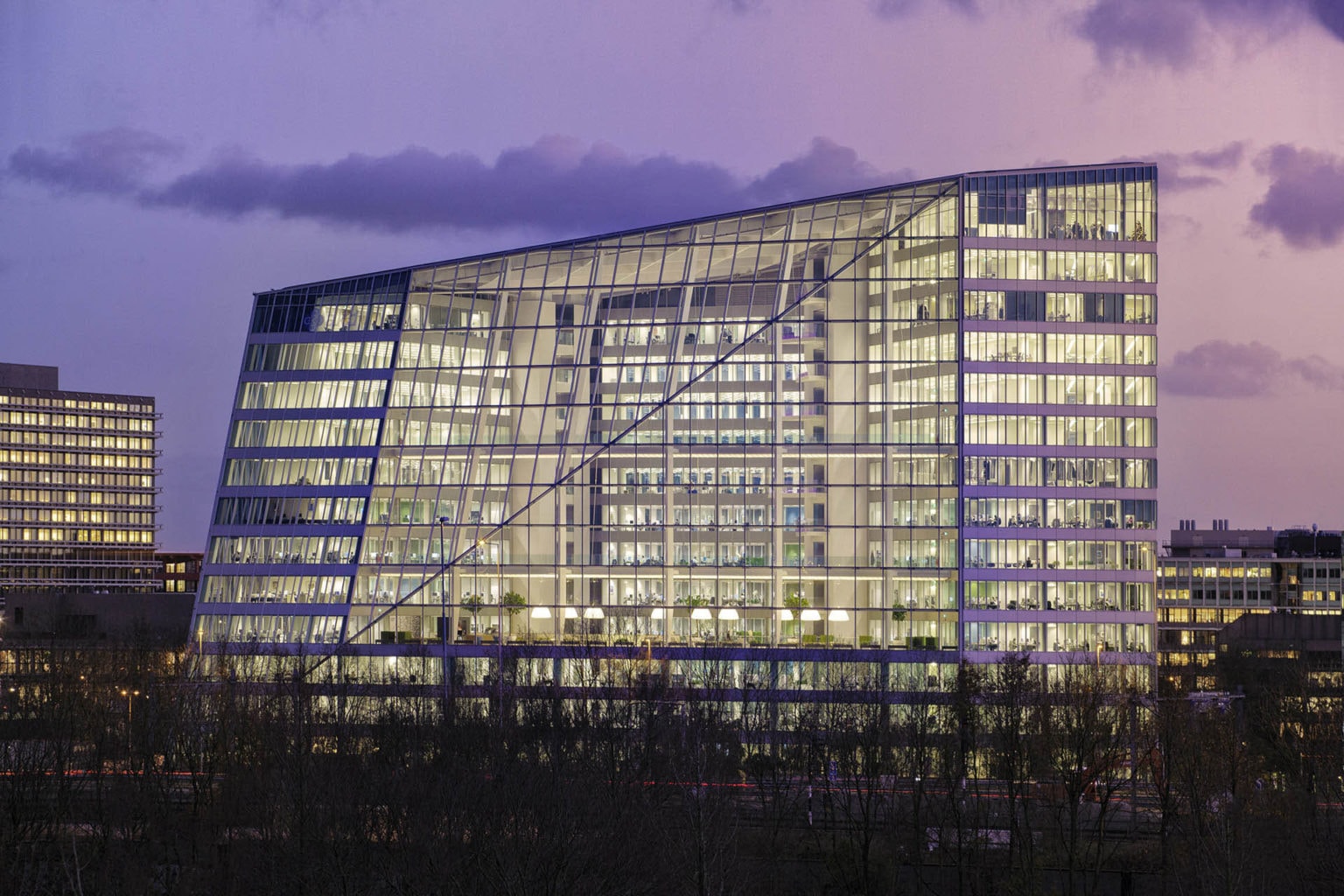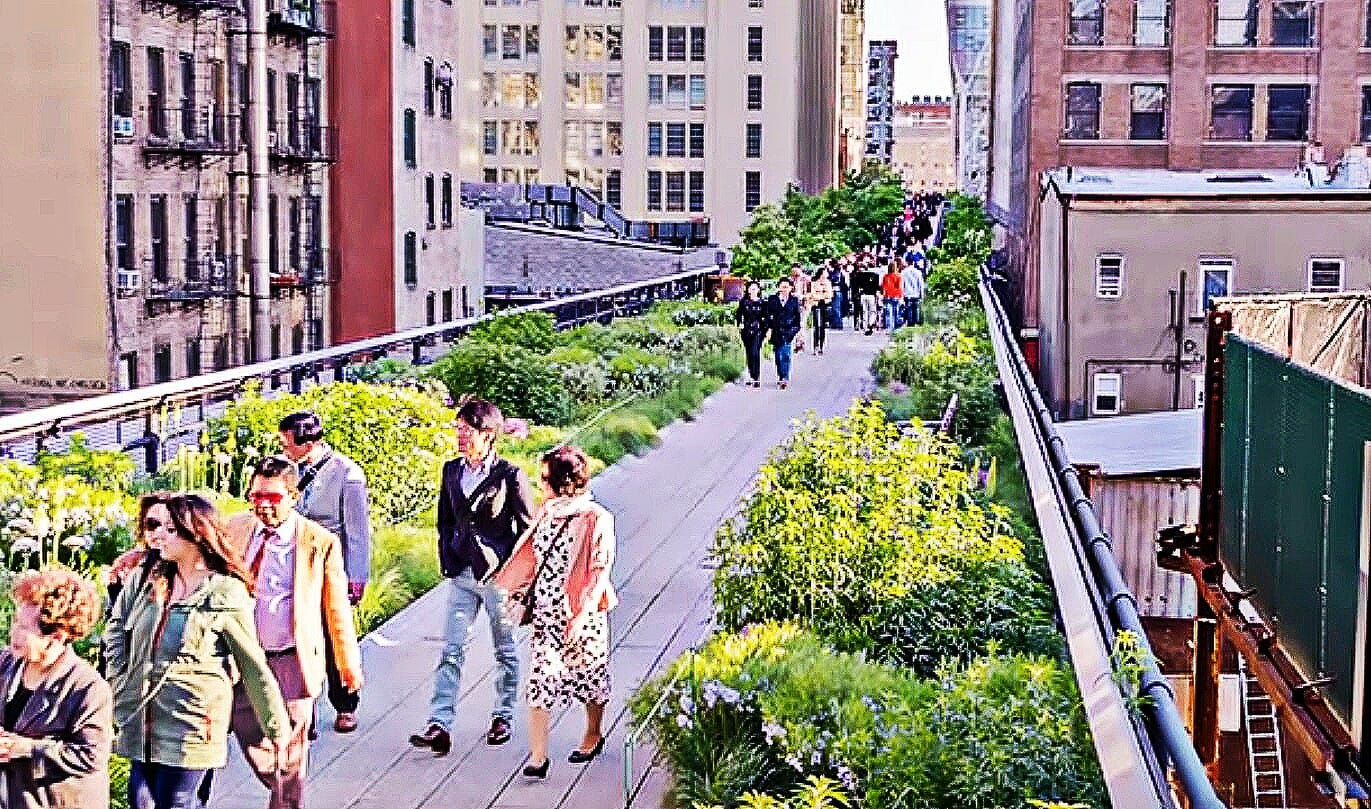The greatest challenge the built environment faces in the coming century cannot be fixed with new energy-neutral buildings. To solve the challenges requires innovation, creativity, and systems thinking. This calls for the need to build infrastructure that actively enhances its surrounding landscape rather than just perform well in itself: enter the age of Catalytic Buildings.
The majority of buildings which humans inhabit in the coming hundred years already exist today. However the majority of public discourse on sustainable architecture is focused on the individual performance of sustainable buildings. Enhancing the existing built environment must be a priority, if we aim at designing truly sustainable cities. As we reach the limit of what we can achieve with individual buildings, we must now envision a city as an interconnected system and a building as an object within it. In short, an interconnected building with a catalytic potential.
When you are working in your building whether is new or you are going to remodel it, you need to prevent the most common roofing problems to avoid bigger problems in the future.
Disruptive Beginning
It was 1999 when I naively proposed my first design for an energy neutral building. I was living in Western Australia at the time, so it was tailor-made to its desert location, ideal for solar power. I thought it made perfect sense. To my astonishment, the concept was met with deafening disinterest by fellow real estate professionals who where more interested about the real estate marketing tips in this podcast. It wasn’t that anyone was against it per se, but the general reaction was one of disassociated wonderment: “Nice… but… why on earth would you want to do that? Who cares, really?”.
They wondered why anyone would have any problem with using electricity from the net. The value of renewable energy-powered, decentralized systems would become mainstream in the industry only a few years later.
About 20 years later, Australia spearheads some of the most innovative energy solutions worldwide, with the powering up of Tesla’s first energy grid battery in South Australia on the 1st of December 2017 being one of the prime examples. Back home in the Netherlands, as well as in my work sites in the US, and across Asia, the uptake of energy efficient and self-powering homes is a delight to witness.
 IN THE PHOTO: CATALYTIC BUILDINGS IMPACT DIAGRAM PHOTO CREDIT: EXCEPT INTEGRATED SUSTAINABILITY
IN THE PHOTO: CATALYTIC BUILDINGS IMPACT DIAGRAM PHOTO CREDIT: EXCEPT INTEGRATED SUSTAINABILITY
Global trends tilted the whole sector’s attention towards sustainability. After exiting its niche, the concept lies now among the key aspects in real estate development. To learn more about effective real estate investments, check this High Return’s turnkey real estate properties.
Efficient energy use is embedded in the legal code requirements of many countries. Volunteer standards such as LEED and BREEAM have proven their market value, spurring the introduction of energy efficient buildings across urban centers worldwide.
More recently, the realization that energy measures alone are insufficient to develop adaptive cities, shed a new light on the need for integrated solutions. We are seeing a whole array of new developments in architecture – healthy buildings, biodiversity concerns, waste reductions, transport-oriented design, circular economy principles, and the increasing use of bio-based materials in buildings.
Engineers, designers, developers, and policy makers are pushing the boundaries of innovation in cities around the world. They’re driven by the pressing need for improvements in quality of life, market share, sales value, as well as by the simple pleasure of innovating.
I can’t help but feel ecstatic when witnessing the development of these innovations. But are these the answer for engineering resilient and inclusive urban centers? And if not, what’s next for sustainable urbanization?
The answer to the first question is a clear and resounding ‘no’.
Maximizing the sustainability performance of each building we build is a prerequisite to comply even to the most modest of international climate treaties. It is a solid step in the right direction, one we should fully embrace. However, aligning new constructions to principles of energy neutrality and circularity hoping the area around it flourishes by extension will not address many of the resilience, health, social, and economic challenges lying ahead.
New construction, in fact, is only a minor part of the urban fabric we populate, now and in the coming century. Most of the buildings in our cities, those we will be likely to inhabit in our lifetime, are already built. As the transition towards brand-new, sustainable constructions marches on, what happens to what is already there?
It is fair to say that the large part of our urban landscape will not be handled the same way. Heritage regulation makes conversions close to impossible for historic districts. Economic considerations (as well as misconceptions about them) cause other non-historic buildings to miss a proper renovation cycle, postponing their restructuring decades into the future. Owners at times don’t see – or simply can’t afford – the necessity for trading some short term profits with long term value. This results in large share of our current building stock locked in a resource-intensive and unhealthy manner for decades.
Looking at the big picture
To foresee an energy efficient and inclusive urbanization, a perspective reversal is necessary.
Instead of focusing on the object level (the single building), what should truly concern us is the sustainability of the city as a whole. When adopting this perspective, it is easier to feel skeptical towards the real shared value of a state of the art, waste-free building in an urban fabric under pressure.
 IN THE PHOTO: CATALYTIC BUILDINGS EXTERIOR VIEW PHOTO CREDIT: EXCEPT INTEGRATED SUSTAINABILITY
IN THE PHOTO: CATALYTIC BUILDINGS EXTERIOR VIEW PHOTO CREDIT: EXCEPT INTEGRATED SUSTAINABILITY
What if we introduced buildings which, rather than focusing on just their own performance, became a vital organ of the surrounding urban landscape?
Enter the age of catalytic buildings. In a nutshell, these buildings give back more than they take. They enhance the resiliency of the fabric of a whole city block, thriving on abundantly available resources in their area in terms of energy, water and waste.
Catalytic buildings not only boost the performance of their own structure, but also of a range of structures surrounding them. They provide environmental, social, and economic shared value to their neighborhoods. They ease traffic pressures, food deserts and waste, improve air quality, push social mobility upward, providing opportunities for education and bottom-up innovation.
They are hubs of local urban metabolic flows of energy, materials and ecosystems.
They become progressive engines of positive change for the city as a whole. They leverage their viability by nurturing new business models. This way, the value of the dynamic flow of ‘life-giving’ exchanges soon rises above the basic revenue of space rental or sale.
 IN THE PHOTO: CATALYTIC BUILDINGS INTERIOR VIEW PHOTO CREDIT: EXCEPT INTEGRATED SUSTAINABILITY
IN THE PHOTO: CATALYTIC BUILDINGS INTERIOR VIEW PHOTO CREDIT: EXCEPT INTEGRATED SUSTAINABILITY
Whilst researching and refining this concept in the last decade, we at Except Integrated Sustainability have drawn up the defining properties of catalytic buildings into eight core principles:
- Catalytic buildings offer a profitable long term investment;
- They give significantly more than they take in at least three categories of energy, water, waste, food, ecosystem and/or socio-economic services;
- They contribute significantly to the social, economic, health, biodiversity and environmental performance of their local area, and actively prevent negative impacts;
- They transform initially unwanted or undervalued local surpluses (waste streams) into valuable services or goods in their specific neighborhoods;
- They facilitate connectivity between people in a community, and facilitate bottom-up entrepreneurship and small local businesses;
- They maximize the efficient use of existing resources, such as real estate, materials, and energy flows, before relying on new ones;
- They maximize resilience and long term adaptability of the neighborhood through re-programmable spaces and flexible business models;
- They report their sustainability performance, knowledge, and experience transparently, publicly, and freely.
- Getting the highest appraisal after getting the property reviewed by experts such you can also find at this website.
We see these buildings become dynamic interchanges of the lifeblood of urban life. As each neighborhood is different, each catalytic building engages differently with its unique environment.
Examples include the refurbishment of an old warehouse as a social and business hub. Its infrastructure takes in liquid waste, converting it to energy through bio-gasification. It reuses waste flows via a beer brewery, generating food and power with greenhouses. It stores renewable energy in the ground as a seasonal buffer. Each component contributes to multiple aspects of its performance. The beer brewery uses low grade waste heat from waste processing, contributing to the water filtration systems. It provides local jobs, and its cafe forms a social gathering place.
 IN THE PHOTO: EXCEPT CATALYTIC PROJECT LAYOUT PHOTO CREDIT: EXCEPT INTEGRATED SUSTAINABILITY
IN THE PHOTO: EXCEPT CATALYTIC PROJECT LAYOUT PHOTO CREDIT: EXCEPT INTEGRATED SUSTAINABILITY
Stacked with other location-appropriate systems to generate energy, food, and local employment, these buildings become unique places, that truly constitute the pulsing heart in a neighborhood.
Catalytic buildings put the urban challenge clearly on our road-map: converting all our cities to sustainable, healthier, and more resilient places. They do so by making not just that one new building sustainable, but by contributing to the sustainability of the society it inhabits – one neighborhood after the other. We won’t resolve our urban challenge until this is the case.
The essence of a sustainable city is to move forward into the future without deteriorating the environment it relies on to survive. This requires a different way of looking at real estate development and adopting a new value perspective which if you feel interested you might also want to See this guide to learn more about marketing ideas for realtors. Combined with innovation which is currently used in sustainable building renovations, this enables a resolution for sustainable cities in the next 20-30 years.
This isn’t just wishful thinking.
The first concepts for catalytic buildings show to be not only feasible in a technical and practical sense, they can also be remarkably profitable. The first concepts are in working order and there are more developments in the pipeline. Of course, catalytic buildings provide for new challenges, from a technical, regulatory, organisational, and planning perspective, but these can be overcome.
We call to action all professionals to take part in this new age in sustainable development. Over the next year, we at Except will accelerate our research of catalytic buildings, their design process, and their development. We’ll be publishing details of how we’ve been going about making them, and case studies in the form of hotels, apartment buildings, multi-tenant offices, and inner city mix used catalytic hubs.
 IN THE PHOTO: CATALYTIC OFFICES LAYOUT PHOTO CREDIT: EXCEPT INTEGRATED SUSTAINABILITY
IN THE PHOTO: CATALYTIC OFFICES LAYOUT PHOTO CREDIT: EXCEPT INTEGRATED SUSTAINABILITY
By bringing the idea to the table, this time I hope it will not take twenty years to make this approach mainstream. We have the solutions, we have the will, and we certainly have the necessity. Now, let’s go ahead and turn catalytic buildings into a reality.














